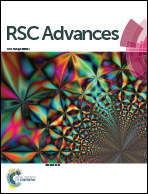Strategies to improve electrocatalytic performance of MoS2-based catalysts for hydrogen evolution reactions
Abstract
Electrocatalytic hydrogen evolution reactions (HERs) are a key process for hydrogen production for clean energy applications. HERs have unique advantages in terms of energy efficiency and product separation compared to other methods. Molybdenum disulfide (MoS2) has attracted extensive attention as a potential HER catalyst because of its high electrocatalytic activity. However, the HER performance of MoS2 needs to be improved to make it competitive with conventional Pt-based catalysts. Herein, we summarize three typical strategies for promoting the HER performance, i.e., defect engineering, heterostructure formation, and heteroatom doping. We also summarize the computational density functional theory (DFT) methods used to obtain insight that can guide the construction of MoS2-based materials. Additionally, the challenges and prospects of MoS2-based catalysts for the HER have also been discussed.

- This article is part of the themed collection: 2022 Reviews in RSC Advances


 Please wait while we load your content...
Please wait while we load your content...